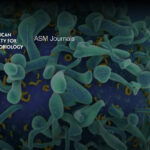
Absence of COVID-19 associated mucormycosis in a tertiary intensive care unit in the Netherlands
8 Ιουλίου, 2024
Identification of two anti-Candida antibodies associated with the survival of patients with candidemia
8 Ιουλίου, 2024Antifungal susceptibility testing following the CLSI M27 document, along with the measurement of MFC/MIC ratio, could be the optimal approach to detect amphotericin B resistance in Clavispora (Candida) lusitaniae. Susceptibility patterns of contemporary isolates of this species.
Antifungal susceptibility testing (AST) is crucial in clinical settings to guide appropriate therapy. Nevertheless, discrepancies between treatment response and some results still persist, particularly in detecting resistance to amphotericin B (AMB) in Clavispora (Candida) lusitaniae. This study aimed to assess the susceptibility patterns of 48 recent isolates of C. lusitaniae to 9 antifungal agents and explore the feasibility of using a CLSI reference-based method to identify AMB resistance. Microdilution techniques revealed a wide range of minimal inhibitory concentration (MIC) values for azole antifungals, while echinocandins and AMB exhibited a narrow range of MIC values, with all strains considered wild-type for the tested polyene and echinocandins. However, when agar diffusion (ellipsometry) was employed for AST, certain strains displayed colonies within the inhibition ellipse, indicating potential resistance. Interestingly, these strains did not respond to AMB treatment and were isolated during AMB treatment (breakthrough). Moreover, the evaluation of AMB minimum fungicidal concentrations (MFCs) indicated that only the strains with colonies inside the ellipse had MFC/MIC ratios ≥ 4, suggesting reduced fungicidal activity... read more
